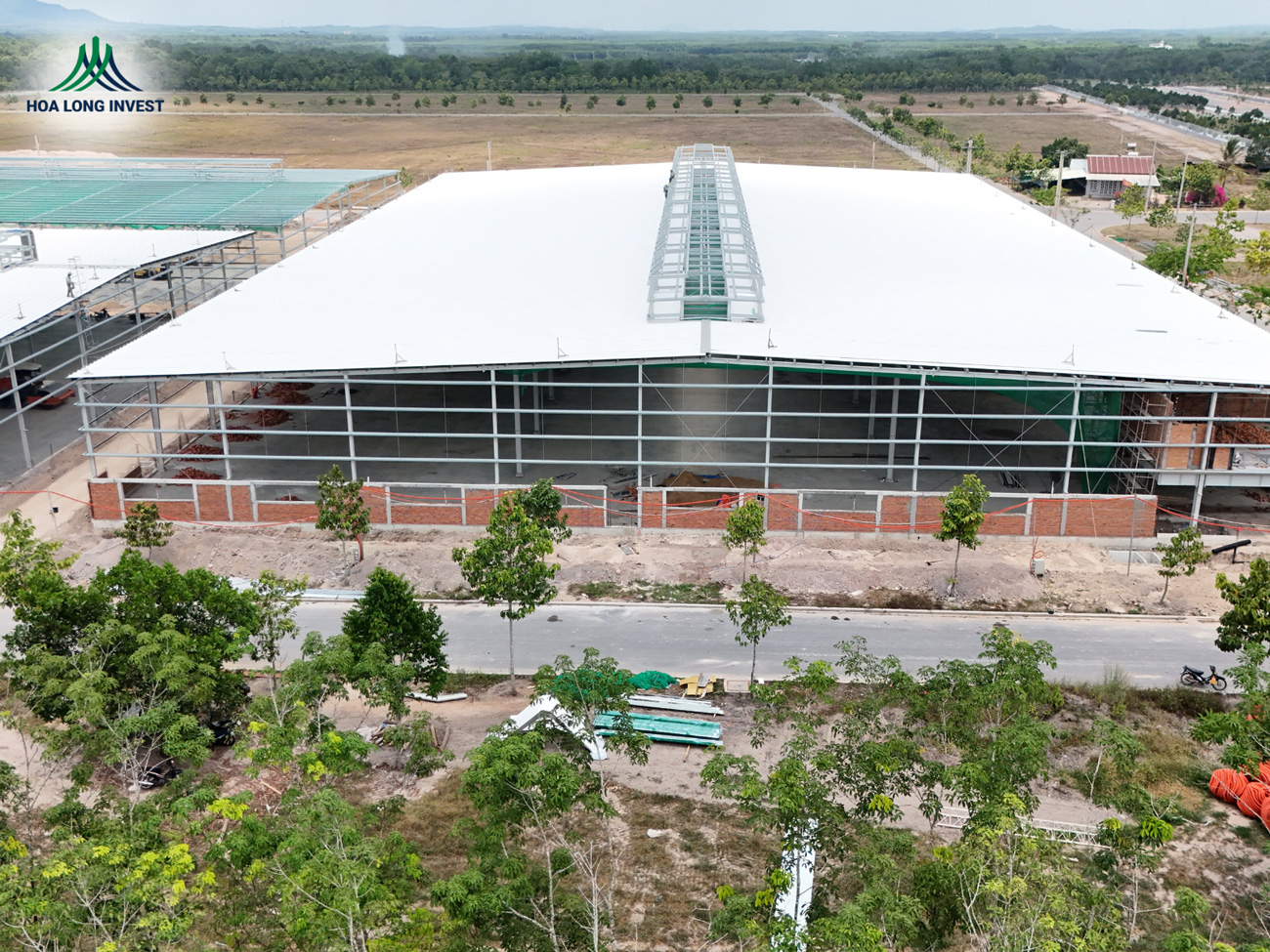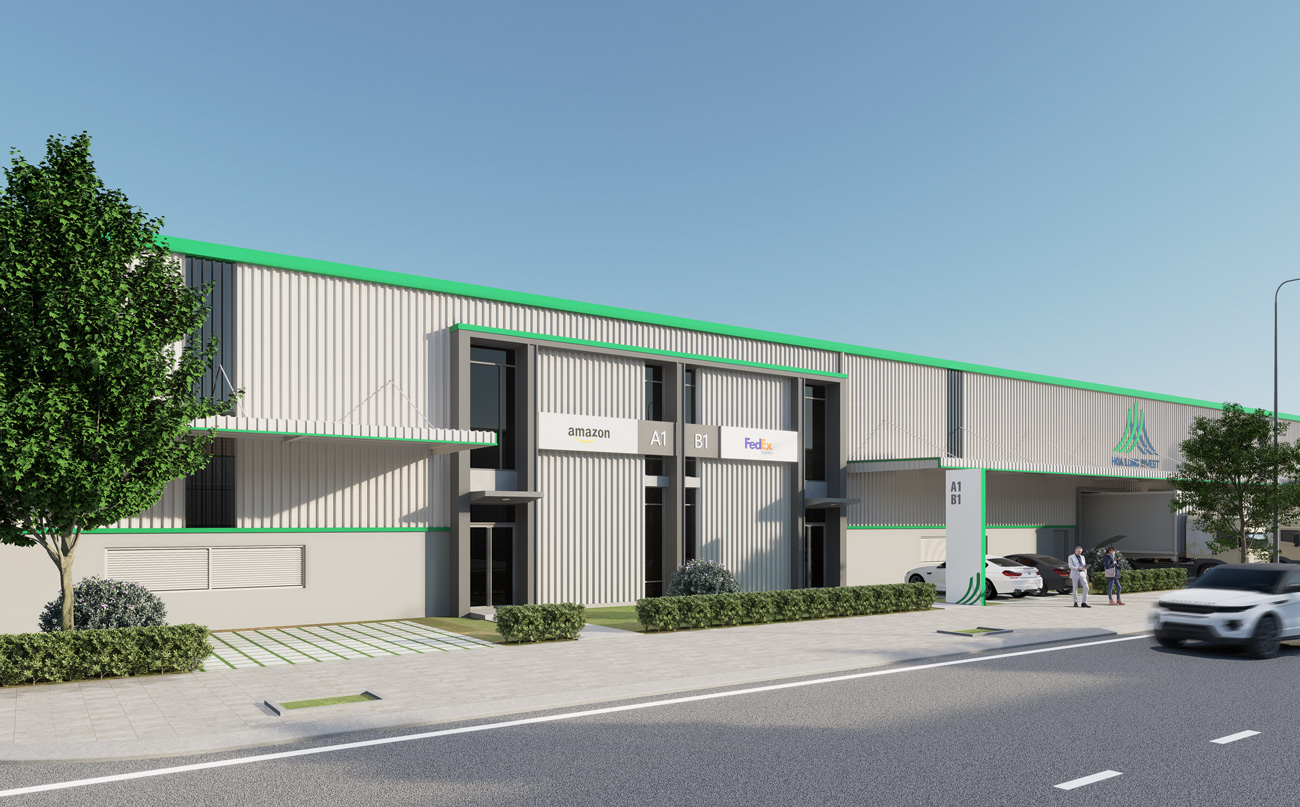Market News
What is the LEED Standard? Benefits and Applications in Ready-Built Factory
30/12/2024
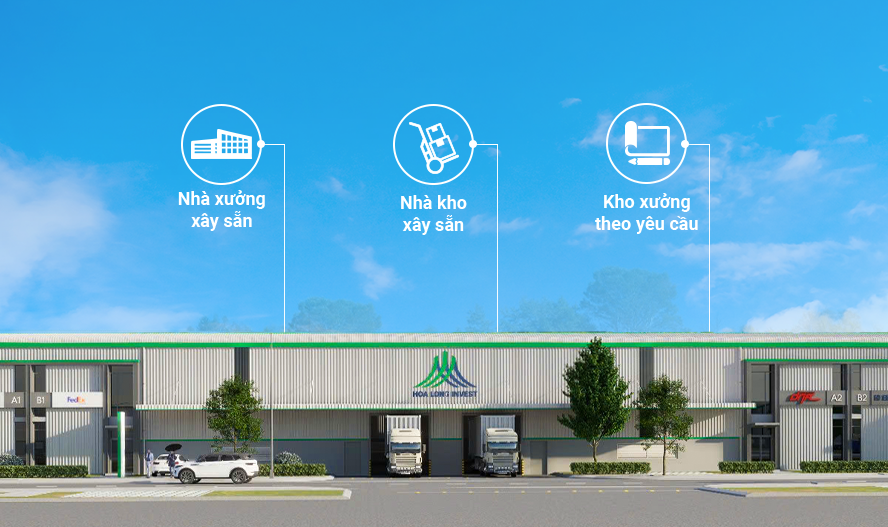
Vietnam’s Emerging Position as a Prime Destination for Industrial Investment
Vietnam is steadily solidifying its position as an attractive destination for foreign investment. In this context, the development of eco-industrial parks following a "green" model is not merely an inevitable trend but also a strategic move to fulfill the government's commitment to sustainable development. The LEED standard, with its stringent criteria for energy efficiency and environmental protection, serves as a guiding framework for projects aligning with this development trend.
What is the LEED Standard?
LEED, short for "Leadership in Energy and Environmental Design," is a globally recognized certification system that evaluates and certifies green buildings. It assesses a building’s environmental friendliness based on criteria such as energy efficiency, water conservation, indoor air quality, and sustainable construction practices.
Developed by the U.S. Green Building Council (USGBC), LEED is the world’s most widely adopted standard in green architecture. It aims to enhance energy performance, optimize water management, improve indoor environmental quality, and maximize resource utilization.
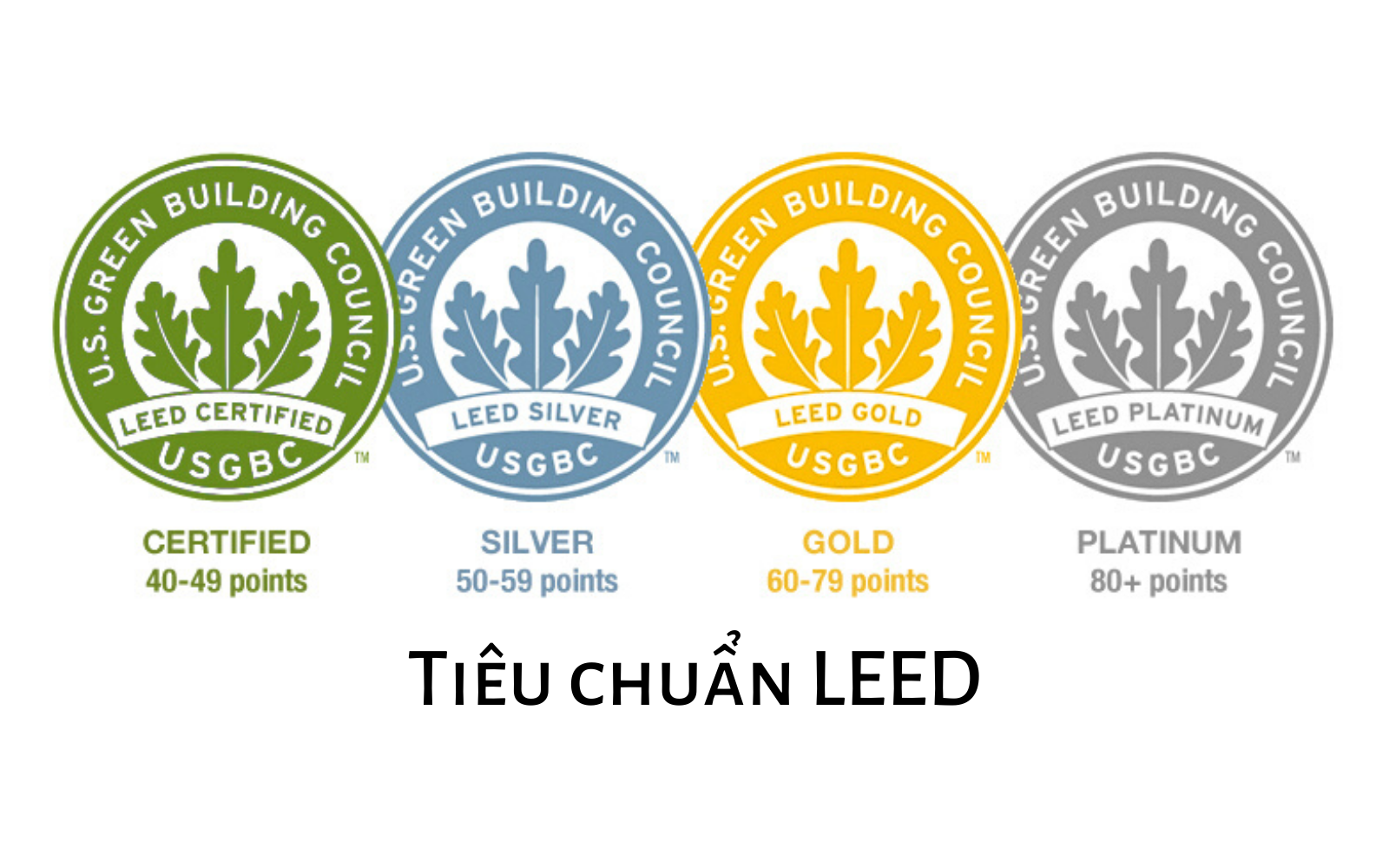
Benefits and Applications of LEED in Ready-Built Factories
Benefits of LEED-Certified Factories
Energy Efficiency – LEED-certified factories use advanced technologies to reduce energy consumption, leading to cost savings and lower carbon emissions.
Water Conservation – Implementing smart water management systems helps optimize water usage and reduce waste.
Improved Indoor Environment – Better air quality and ventilation systems enhance employee productivity and well-being.
Sustainable Materials – The use of recycled and eco-friendly materials contributes to resource conservation and environmental protection.
Regulatory Compliance – Achieving LEED certification demonstrates compliance with global sustainability standards, enhancing corporate reputation.
Applications in Ready-Built Factories
Site Selection and Design – Ready-built factories can be developed on environmentally sustainable sites, ensuring minimal ecological disruption.
Energy-Efficient Infrastructure – Factories can integrate LED lighting, solar panels, and high-performance insulation to optimize energy use.
Water Management Systems – Implementing rainwater harvesting and low-flow fixtures reduces water consumption.
Waste Reduction Programs – Encouraging recycling and using low-emission construction materials help factories meet LEED requirements.
Operational Efficiency – Smart building management systems can monitor energy consumption, reducing waste and increasing overall efficiency.
LEED Certification Levels and Scoring System
LEED certification consists of two key components: prerequisites and credits.
Prerequisites: These are mandatory baseline requirements that all projects must meet to qualify for LEED certification. These prerequisites ensure fundamental sustainability standards are met. For example, a prerequisite may require that a project be constructed on land that does not negatively impact critical ecosystems.
Credits: These are optional criteria that developers can adopt to earn points for their projects. Credits focus on specific aspects of green building, such as enhancing energy efficiency, optimizing water management, or improving indoor environmental quality. Each credit carries a certain number of points, and the total score determines the LEED certification level achieved.
| Certification Level | Score Range |
|---|---|
| LEED Certified | 40-49 points |
| LEED Silver | 50-59 points |
| LEED Gold | 60-79 points |
| LEED Platinum | 80+ points |
To obtain LEED certification, buildings must fulfill all prerequisites and achieve the required credit points for their target certification level. Higher scores indicate a higher level of sustainability and environmental responsibility compared to other structures.
Key LEED Evaluation Categories
LEED assesses projects based on eight core categories:
| Objective | Criteria |
| Energy Efficiency | Evaluates the building's energy consumption. |
| Water Efficiency | Assesses water conservation and management. |
| Materials & Resources | Evaluates sustainability in material use. |
| Environmental Impact | Measures the building’s eco-friendliness. |
| Indoor Air Quality | Assesses indoor environmental conditions. |
| Accessibility & Mobility | Evaluates transportation and location benefits. |
| Health & Well-being | Examines factors affecting human health. |
| Environmental Management | Evaluates environmental governance strategies. |
The Importance of LEED Certification
Studies indicate that businesses operating in LEED-certified workspaces experience higher employee retention and productivity. According to Dailey (2013), improved indoor air quality can boost labor productivity by up to 18%, enhance memory retention, and foster creativity.
Adopting LEED standards enhances energy efficiency and reduces harmful emissions by minimizing direct solar heat exposure, utilizing energy-efficient lighting, and installing water-saving fixtures. On average, LEED-certified projects achieve:
28% energy savings,
32% water conservation,
45% reduction in embodied energy in construction materials.
Financial Incentives for Green Growth in Vietnam
Promoting green growth is a cornerstone of Vietnam’s sustainable development strategy. To achieve these goals, the government has introduced various financial policies, aligning with national and international commitments.

Tax incentives play a crucial role in encouraging green production and consumption. Under Vietnam’s corporate income tax (CIT) regulations, businesses in the environmental sector benefit from a preferential 10% tax rate throughout their project’s lifespan. Additionally, newly established enterprises in this field may receive tax exemptions for up to four years and a 50% reduction for the following nine years. Furthermore, the CIT law exempts income generated from the transfer of carbon emission reduction certificates.
Pre-Certified LEED Industrial Facilities in Vietnam
LEED-certified industrial facilities are increasingly becoming a key consideration for investors seeking sustainable industrial real estate projects.
According to the U.S. Green Building Council, beyond reducing carbon footprints and cutting energy costs, LEED-certified buildings provide businesses with a competitive advantage by enhancing brand reputation and strengthening global supply chain competitiveness.
Commenting on Vietnam’s industrial real estate market, Alex Crane, CEO of Knight Frank Vietnam, stated: “The continued development and utilization of ready-built factories is a positive sign, offering more options for tenants considering Vietnam as an investment or expansion destination.” Leasing industrial spaces—especially those with environmental certifications—further integrates Vietnam into the global supply chain.
HLI EcoHub Nam Ha: Pioneering LEED-Certified Industrial Spaces
Hoa Long Invest identifies eco-industrial parks as an essential criterion for foreign investors prioritizing sustainable development, economic benefits, and corporate social responsibility, particularly in compliance with ESG standards. As a result, the company views the development of eco-industrial parks as a crucial and urgent necessity for creating a long-term competitive advantage while contributing to climate change mitigation and energy security.
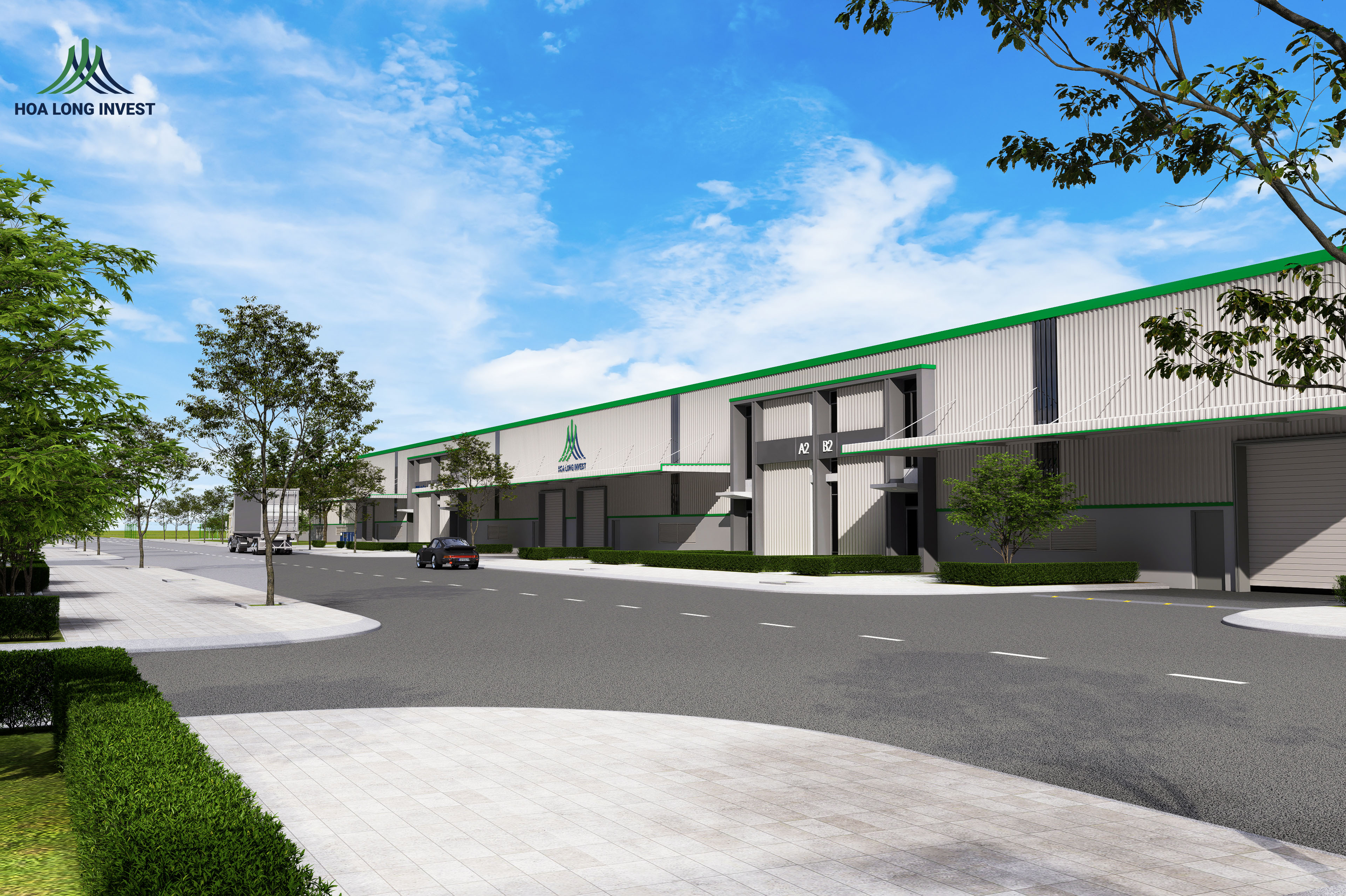
Currently under development by Hoa Long Invest, HLI EcoHub Nam Ha is a pre-certified LEED industrial facility designed to meet international standards for green and sustainable construction. Positioned as a leader in green transition, HLI EcoHub Nam Ha aims to fulfill the modern manufacturing demands of businesses while serving as an ideal destination for enterprises committed to global sustainability trends.


